Putting Better Baked Goods on the Table
New ingredients and some old ones too are helping to improve the nutritional aspects and attributes like flavor and texture in bakery products.
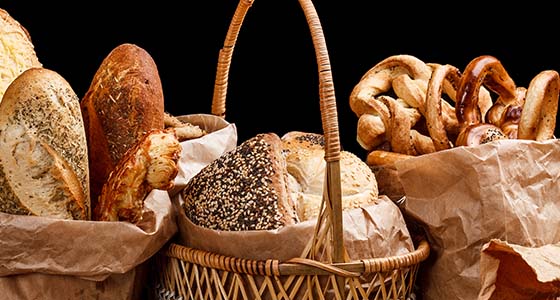
Technical experts and ingredient suppliers shared their knowledge and demonstrated a range of ingredients in bakery product concepts at the International Baking Industry Exposition (IBIE) held this fall in Las Vegas. Bakery professionals from around the world gathered at the show to gain insights into some of the consumer and product trends driving the bakery category like formulation improvements for gluten-free products and new ways to incorporate whole grains. Many companies are still looking to provide better nutrition in an indulgent product like a cookie or cake, says Simon Walley, Regional Business Director, Food Enzymes, DuPont Industrial Biosciences. These products, referred to as healthy indulgences, will not replace true indulgent products, he adds, but will provide a choice to consumers who want a bit more nutrition in their baked goods. This article briefly describes some of the product and ingredient trends in improving the nutrition of gluten-free foods, formulating with low-saturate oils, and incorporating whole grains and ancient grains into formulations to help consumers meet the recommended amount of these ingredients.
Making Gluten-Free Nutrient-Dense
According to Packaged Facts, the U.S. gluten-free market is expected to reach $4.2 billion in 2013 and increase to $6.6 billion by 2017. The National Foundation for Celiac Awareness estimates that only one in 133 Americans has been diagnosed with celiac disease, a debilitating autoimmune disorder where eating gluten from wheat, rye, and barley triggers an immune response in the small intestine that over time can lead to inflammation in the small intestine and prevent the absorption of some nutrients. These people must avoid gluten in the diet.
Those who suffer with celiac disease are not the only consumers driving the growing market; the estimated 3 million U.S. consumers who are undiagnosed as well as those who do not test positive for celiac disease but still suffer side effects (non-celiac gluten sensitivity), those allergic to wheat, or those who avoid gluten because they think it is healthier to do so contribute to the popularity of gluten-free foods. Data from market research firm Mintel show that 65% of consumers say they eat or used to eat gluten-free foods because they think the foods are healthier and 27% report that they eat the foods because they believe they help them to lose weight (Mintel, 2013). This, despite the fact that there is no research that affirms this, remarks Amanda Topper, a food analyst at Mintel.
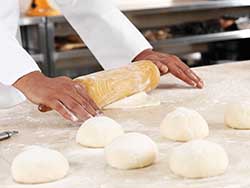 As the numbers seem to point to continued growth in the gluten-free product market at least in the near term, product developers will continue to invest in developing better-tasting gluten-free foods and ingredients that deliver nutrition and acceptable sensory characteristics. “We know a lot about the science of baking, and we’re trying to take those key pieces of knowledge and apply them where we can to gluten-free product development,” says Kurt Becker, Research Scientist at ConAgra Foods. “So much of what is known has been gained through a lot of hard work and frankly, a lot of failure—often repeated failures—to get to a product that looks and tastes great.”
As the numbers seem to point to continued growth in the gluten-free product market at least in the near term, product developers will continue to invest in developing better-tasting gluten-free foods and ingredients that deliver nutrition and acceptable sensory characteristics. “We know a lot about the science of baking, and we’re trying to take those key pieces of knowledge and apply them where we can to gluten-free product development,” says Kurt Becker, Research Scientist at ConAgra Foods. “So much of what is known has been gained through a lot of hard work and frankly, a lot of failure—often repeated failures—to get to a product that looks and tastes great.”
Becker and several other experts presented solutions to overcoming challenges of formulating gluten-free baked goods during a technical session at IBIE. Gluten, which is made up of the proteins gliadin and glutenin, contributes a number of functions to baked goods such as elasticity, structure for gas retention, and texture. When gluten is removed from a formulation, the resulting bakery product can be dense, have no structure, crumble easily, or be prone to quicker staling. The solution is to use different ingredients like wheat-free flours, specialty flours, starches, proteins, fiber, and hydrocolloids to provide body, structure, and moisture retention in gluten-free foods. Tate & Lyle develops what it calls gluten-free bakery systems of ingredients like starches, soluble corn fiber, and hydrocolloids that are specially formulated to meet the specific functional and nutritional specifications of its customers’ gluten-free food products. The combination of ingredients can address challenges faced in the freeze/thaw, texture, and shelf life of baked goods like the chocolate hazelnut gluten-free cupcake it showcased at IBIE.
In addition to choosing ingredients for their functional benefits, Jennifer Williams, Senior Applications Scientist at Penford Food Ingredients, explains that a new trend is to add healthful ingredients that provide the needed function but also add nutrition to the gluten-free products. She says that some of the most widely used ingredients like starches and rice flours that are used in gluten-free product formulating provide function but lack nutrients. “The products look good and taste good but they are not very nutritionally balanced.” In her evaluation of dozens of major gluten-free food brands, Shelly Case, a registered dietitian who spoke during an IBIE technical session presented by the Grain Foods Foundation, found that most of the products were nutrient deficient. “Historically, white rice flour, corn starch, potato starch, and tapioca starch have been the staples that we’ve used in gluten-free baked products, and even today if you look at a lot of the products, they’re made with these main staples. Unfortunately, they are not very nutritious,” explains Case.
--- PAGE BREAK ---
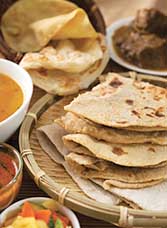 Product developers can experiment with using whole grains and ancient grains like sorghum, quinoa, amaranth, buckwheat, and more, proteins like soy, pea, rice, corn, whey, and legumes, oils like flax, fish, algal, soy, and canola, and fibers like bran, gums, specialty soluble fibers, and resistant starches to help add nutrients to gluten-free baked products. Market research indicates consumers are interested in bakery products that offer health and wellness attributes, which presents opportunities for product developers, explains Brook Carson, Director of R&D at ADM and a speaker at IBIE. Some manufacturers are investigating the use of sorghum flour, which, according to United Sorghum Checkoff Program, is gluten-free, has a neutral flavor, can substitute for wheat flour in many baked good applications, and has the added benefit of nutrients like whole grains, fiber, iron, protein, and antioxidants. Additionally, Carson says that research shows sorghum flour may have positive effects on cholesterol levels and cancer development. Bean powder as a protein source can add some of the nutritional benefits of beans to gluten-free bakery products. ADM demonstrated the use of its Harvest Pearl® sorghum flour and Vegefull™ navy bean powder in a gluten-free chocolate cake pop during IBIE. ConAgra Mills has developed Eagle Mills® Gluten-free All-purpose Multigrain Flour Blend of sorghum, amaranth, millet, quinoa, and teff to formulate gluten-free bread that more closely resembles the texture, color, and consistency of full-gluten bread but with added fiber and whole grains.
Product developers can experiment with using whole grains and ancient grains like sorghum, quinoa, amaranth, buckwheat, and more, proteins like soy, pea, rice, corn, whey, and legumes, oils like flax, fish, algal, soy, and canola, and fibers like bran, gums, specialty soluble fibers, and resistant starches to help add nutrients to gluten-free baked products. Market research indicates consumers are interested in bakery products that offer health and wellness attributes, which presents opportunities for product developers, explains Brook Carson, Director of R&D at ADM and a speaker at IBIE. Some manufacturers are investigating the use of sorghum flour, which, according to United Sorghum Checkoff Program, is gluten-free, has a neutral flavor, can substitute for wheat flour in many baked good applications, and has the added benefit of nutrients like whole grains, fiber, iron, protein, and antioxidants. Additionally, Carson says that research shows sorghum flour may have positive effects on cholesterol levels and cancer development. Bean powder as a protein source can add some of the nutritional benefits of beans to gluten-free bakery products. ADM demonstrated the use of its Harvest Pearl® sorghum flour and Vegefull™ navy bean powder in a gluten-free chocolate cake pop during IBIE. ConAgra Mills has developed Eagle Mills® Gluten-free All-purpose Multigrain Flour Blend of sorghum, amaranth, millet, quinoa, and teff to formulate gluten-free bread that more closely resembles the texture, color, and consistency of full-gluten bread but with added fiber and whole grains.
For fiber-enriched gluten-free foods with enhanced texture, Penford offers PenTech™ GF customized starch blend of hydrocolloids and/or proteins combined to provide the desired texture, mouthfeel, appearance, and taste of a full-gluten product, and PenFibe RS potato-based RS4 resistant starch for fiber fortification and sugar reduction. PenTech GF is said to reduce gumminess and stickiness and enhance moisture, spread, and volume. PenFibe RS is heat and pH stable and has neutral flavor and texturizer capabilities. The ingredient also has high total dietary fiber of 85% and can increase butyrate-producing species in the large intestine, potentially contributing to gut health, Ibrahim Abbas, Senior R&D Manager at Penford, told attendees at an IBIE technical session about the use of resistant starches in gluten-free foods. Penford demonstrated the functional capabilities of these two ingredients in a fiber-enriched gluten-free Cheddar scone and gluten-free, egg-free apple empanada at IBIE.
 Solutions for Lowering Saturated Fats
Solutions for Lowering Saturated Fats
Bakery products taste delicious but are not the healthiest food options. They can be high in sugar, fat, and cholesterol and lack many important nutrients. One of the focuses in recent years has been on fat, not necessarily reducing total fat, but on using healthier oils or fats that contain less saturates or no trans fat. For example, DuPont Nutrition & Health has a liquid margarine ingredient that has 60% less saturated fat than block cake margarine and can be used to produce cake with the softness and texture that conventional block margarine would provide. It is made with Grindsted® PS Specialty Blend, which is added with oil at the beginning of the margarine production process. The Grindsted ingredient helps maintain the liquid oil in suspension. In addition to being lower in saturated fat, the liquid margarine is higher in monounsaturated and polyunsaturated fats, according to the company. Bunge debuted a low-saturates option, UltraBlends 148 All Purpose Shortening, at IBIE. The company used a proprietary blending and crystallization process (triacylglycerols mismatch) to reduce the levels of saturates by more than 40% in the all-purpose shortening. One tablespoon of the shortening has 3 g of saturated fat, 0 g of trans fat, 3 g of polyunsaturated fats, and 6 g of monounsaturated fat.
Developers of these oils want to meet both the nutritional requirements and processing needs of product developers. This means that the oils have to provide benefits like longer fry life, greater shelf life, and minimal cleanup of equipment as well as be cost-effective, says Dave Booher, Group Leader–Omega-9 Oils at Dow AgroSciences. His company developed Omega-9 sunflower and canola oils to have more than 70% oleic acid, less than 3% linolenic acid, low saturated fat, and no trans fat while providing food manufacturers with increased finished product stability and the ability to use the oils as fry oils, sprays, shortenings, and liquid. Oils that have high oxidative stability like these, explains Booher, allow product developers to remove antioxidants and other ingredients from the formulation to achieve “clean labels” that consumers want.
In addition to high-oleic oils produced from sunflowers and canola like those from Dow AgroSciences, scientists have developed trait-enhanced soybeans to make high-oleic soybean oils. Through various biotechnology methods, researchers have made available high-oleic soybean oils with three times the amount of monounsaturated fatty acids than commodity soybean oil, low saturated fat, and no trans fat, according to Qualisoy and United Soybean Board. Additionally, in baked goods like muffins, quick breads, cakes, and brownies, high oleic soybean oil will not compete with or overpower other flavors, as it has a neutral flavor profile. It also has high resistance to oxidation, reduced build-up of polymers on equipment, and high heat stability.
IOI Loders Croklaan featured a new line of trans-fat-free ingredients called FuseRite™. In addition to being free from trans fat, the company reports that these colored and flavored palm shortenings offer better shelf stability to products and can be customized to specific melting points. The creamy, consistent shortenings provide the desired texture for different bakery applications like sugar cookies, which the company distributed at its booth.
We are used to seeing fats and lipids derived from sources like soybeans, corn, olive, palm, and the like, but what about microalgae? Two companies have recently begun promoting their lipid ingredients based on microalgae as ways to reduce fat in a number of applications, including bakery.
Roquette manufactures High Lipid Algal Flour, an ingredient derived from microalgae that can help product developers reduce total fat, saturated fat, calories, and cholesterol in products. About half of the ingredient is composed of lipids (19% saturated fat, mainly palmitic acid, 69% monounsaturated fat, mainly oleic, and 12% polyunsaturated fat, mainly linoleic acid) followed by insoluble and soluble fiber, other carbohydrates, protein, and simple sugar. Roquette has successfully formulated it into such foods as a reduced-fat cranberry muffin, reduced-fat gluten-free brownie, and reduced-fat rosemary chipotle whole-wheat cracker.
Another microalgae-based ingredient for use in bakery and other applications is Whole Algal Flour from Solazyme. In addition to its low saturates, no trans fat, and no cholesterol characteristics, the ingredient is said to help reduce calories and provide the same mouthfeel as food with higher amounts of fat as well as replace eggs, butter, milk, and other lipid ingredients in gluten-free, sweet, and savory baking applications. Solazyme uses proprietary strains of microalgae that it says are heterotrophic and use sugars to create nutrients like lipids, fibers, proteins, micronutrients, and carotenoids.
--- PAGE BREAK ---
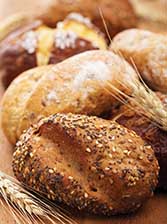 Go with the (Whole) Grain
Go with the (Whole) Grain
Americans tend to consume enough total grains, but of these, most are refined (USDA, 2010). In recent years, there has been a push by nutritionists and policy makers for Americans to increase their consumption of whole grains, which contain the entire kernel (bran, germ, and endosperm) and all of the nutrients found in it, and may confer a number of health benefits related to obesity, cancer, diabetes, heart disease, and stroke. The Dietary Guidelines for Americans, 2010, recommends that at least half of the grains Americans eat be whole grains.
Consumers are more aware of the health benefits that whole grains may offer, and as a result, whole grains are finding their way into more mainstream products, says Susan V. Kay, Manager, Product Applications at Bay State Milling Co., and a speaker at IBIE. Product developers and culinary professionals are adding whole grains in bakery and a number of other applications to capitalize on the growing health and wellness appeal of whole grains. Kay suggests that manufacturers of certain bakery products consider formulating with whole grains as a way to differentiate products through visual appeal, a variety of textures, and interesting flavors.
Grains come in a variety of shapes and sizes, and flavors can be sweet, grainy, peppery, nutty, earthy, buttery, and starchy. While this might appeal to some consumers who want to know that the whole grains are in the food product, other consumers, particularly children, are put off by the color, flavor, and texture of products made with whole grains and as a result are not getting the nutrients they offer. With regard to whole grains consumption, we are not close to consuming the Dietary Guidelines recommendation, and a big challenge in the food industry is how to shift the mainstream consumer to more whole grain nutrition, says Mike Veal, Vice President of Marketing at ConAgra Mills. The company’s NuFiber® flour allows food formulators to incorporate the nutrients of whole grains into products while producing a baked good with mild flavor and light color. “In a lot of applications where you are fortifying fiber, you are using something like inulin or some other cellulose, and you get the fiber benefit but that’s it,” remarks Veal. “It’s one dimensional. With NuFiber you get all of the concentrated fiber and fat-soluble vitamins that you find in wheat as well as minerals and protein, so it’s a much more whole food approach for boosting fiber.” What’s more, dough made with the ingredient has a lower enzyme activity compared to whole wheat dough in which certain enzymes that can shorten shelf life by causing syneresis or rancidity are still active, adds Veal.
Ancient grains are being promoted as another way to add variety and nutrients to bread, muffins, and other bakery products. Ancient grains, according to Colleen Zammer, Director of Product Marketing, Bay State Milling Co., have specific origins and have not been subjected to modern agricultural practices. These grains, which include spelt, einkorn, millet, and teff, and pseudo-cereals amaranth, quinoa, and buckwheat, and others are important to many cultures around the world as they are used to make staple foods, she adds.
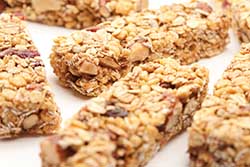 Ancient grains are packed with nutrients like protein, fiber, and more, and thus are especially popular with product developers looking to add value to their products and possibly position them as premium or gourmet products. Some are even free of gluten like GrainEssentials® gluten-free flour, a combination of ancient grain and brown rice flour from Bay State Milling.
Ancient grains are packed with nutrients like protein, fiber, and more, and thus are especially popular with product developers looking to add value to their products and possibly position them as premium or gourmet products. Some are even free of gluten like GrainEssentials® gluten-free flour, a combination of ancient grain and brown rice flour from Bay State Milling.
As consumers change their purchase and eating habits around meal opportunities like breakfast and snacking, product developers can capitalize on the qualities of ancient grains to create appealing and exciting bakery products. As breakfast cereal sales decline, product developers and foodservice operators can formulate protein-packed, convenient bakery breakfast options like teff scones, buckwheat buns, and quinoa granola, explains Zammer.
Other opportunities to formulate ancient grains into foods for breakfast as well as for other meal opportunities throughout the day include bowl presentations in which the grains and other ingredients are served together in one dish, flatbreads like tortillas, lavash, pita, and naan for wraps, and pastas. Research shows that the numbers of snack foods with a health positioning are increasing, Zammer adds, creating yet another opportunity for product developers to incorporate ancient grains.
The bakery category will continue to evolve to keep up with the changing product and purchasing trends and the health needs of consumers. Ingredients are being developed that help improve flavor, texture, shelf life, and nutrition of bakery products while food formulators continue to find new ways to utilize bakery products beyond breakfast and dessert. Of course, the sweet, rich, and decadent baked goods will always be available, but consumers who want some nutrition with their indulgent treat will also have options.
Calculating Bakery Cost Reduction
Ingredion Inc. launched its new bakery cost reduction calculator to show product developers how they can save money by using Ingredion’s Homecraft® Create 765 Functional Flour to reduce a percentage of fat in formulations for bakery products. For example, the company’s experts in bakery applications showed how up to 7 cents per 18-ounce box of dry mix and 4 cents per unit of ready-to-eat baked goods were saved when 25% of the shortening or fat is replaced with Homecraft Create 765. In this case, a manufacturer that produced 2 million units of dry mix would save $140,000. Ingredion experts have also compared taste and textural attributes of brownies made from full-fat dry mix with brownies made from 25% and 60% fat-reduction dry mixes and showed that manufacturers can reduce fat by 25% or more and still produce brownies with the desirable attributes that consumers expect, says Patrick O’Brien, Bakery Marketing Manager at Ingredion. Homecraft Create 765 can reduce fat and cut costs in quick bread, cakes, cookies, and brownies, and it is labeled as “wheat flour.”
Pinpointing Consumers’ Attitudes about Bakery Items
The results of two new studies shed light on what drives consumer liking of whole wheat bread and what parents look for in bakery items when purchasing them for their children. The first study, conducted by Horizon Milling LLC, a joint venture between CHS Inc., and Cargill Inc., as part of its proprietary multi-year research program, found that consumers liked whole wheat bread that is less bitter and more umami and sweeter. The study also showed that particle size does not have an impact on the liking of whole wheat bread. The researchers want to build upon these and the other results of the study to help product developers formulate a whole wheat bread that has the sensory characteristics that consumers want.
The results of Cargill’s Gatekeeper Purchase Drivers Study found that parents are not satisfied with the healthfulness of bakery product currently on the market and that they want healthier options to purchase for their children. In fact, nine of 10 parents reported that they would be likely to purchase healthier versions of products. Cargill suggests that this gap between parent dissatisfaction with current product choices and the intent to purchase healthier options means product developers have the opportunity to formulate better-for-you options, particularly in the categories of cookies, breads/rolls, crackers, and snack bars.
 Karen Nachay,
Karen Nachay,
a Member of IFT, is Senior Associate Editor of
Food Technology magazine
([email protected]).
References
Mintel. 2013. More than a quarter of Americans eat gluten-free foods to help them lose weight, reports Mintel. Mintel, press release, Oct. 14.
USDA. 2010. Dietary Guidelines for Americans 2010. U.S. Dept. of Agriculture.
